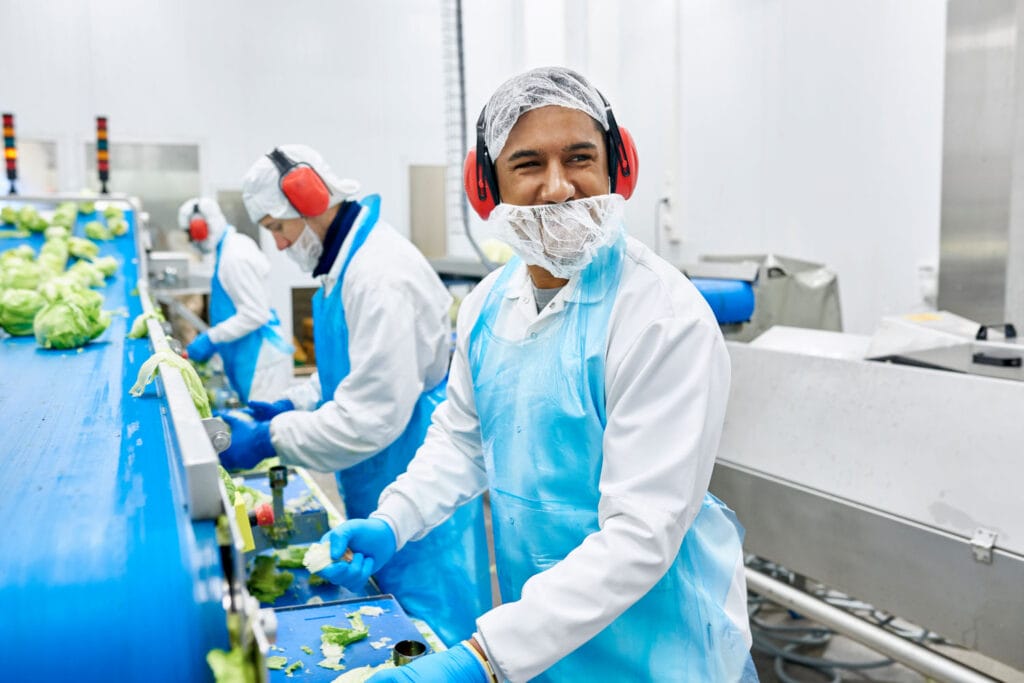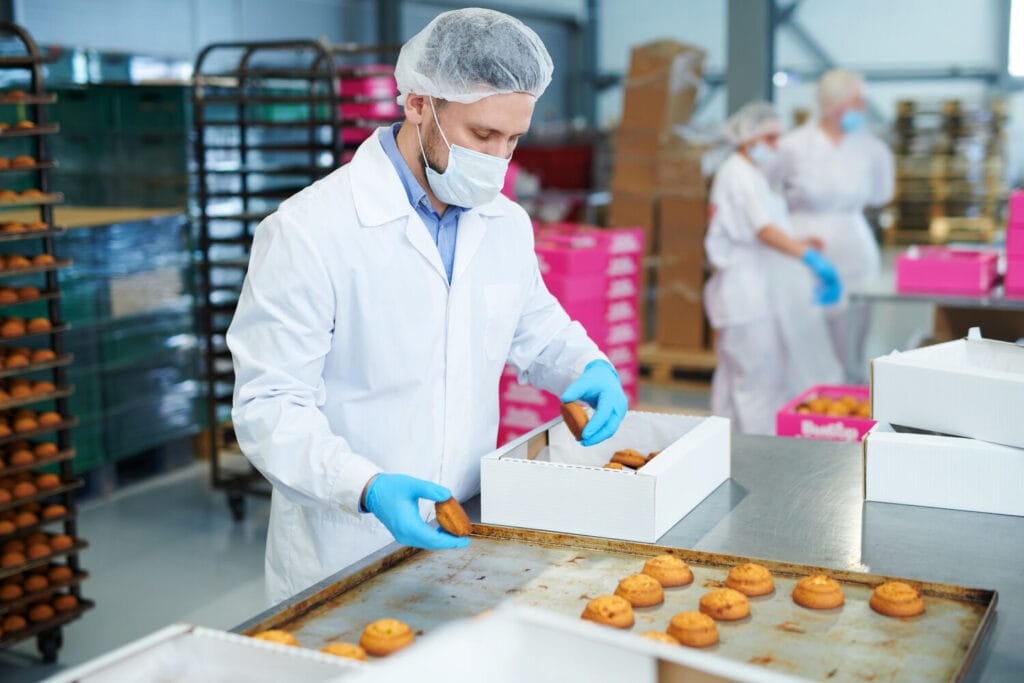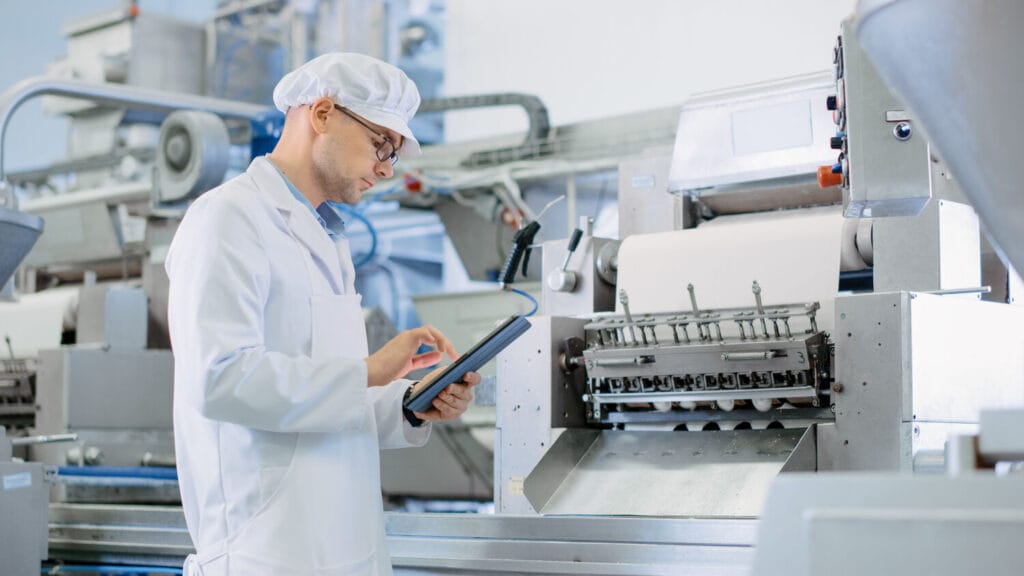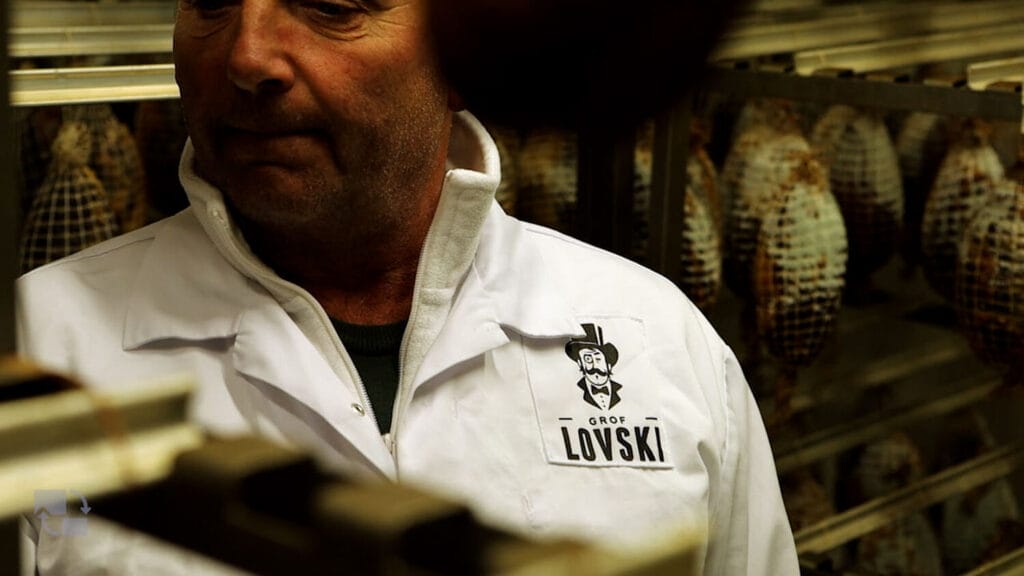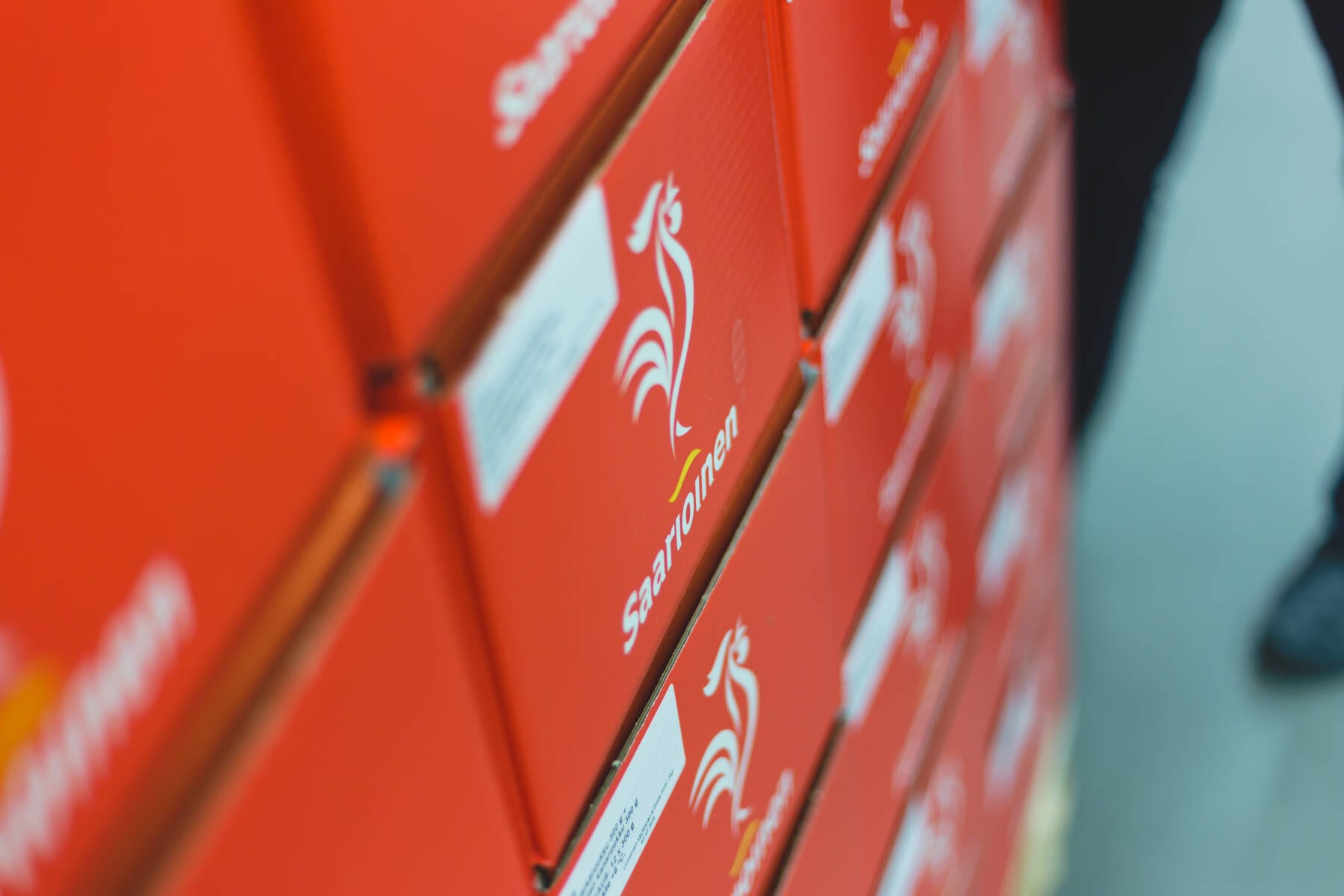
Saarioinen’s recipe for food safety is workwear
In most industries, the purpose of workwear is to protect the person. In the food industry, workwear must also ensure food safety and quality. According to Marelle Pihlak, HR Manager at Saarioinen Estonia, meeting all food safety and quality standards by purchasing workwear and washing it in-house would require a top-tier laundry facility and time investment from employees. That’s why the company chose to leave this task to their textile partner, Lindström.
Saarioinen Estonia produces the award-winning Mamma convenience foods. They follow stricter food safety requirements compared to many other food sectors. This is because much of of their production is done by hand. Marelle Pihlak points out that none of the praised Mamma pancakes or salads would reach store shelves or competition podiums if workwear was not properly handled and maintained.
Industries where food moves through metal pipes or is heat-treated can get by with somewhat simpler standards. But you can’t make a sandwich without direct human contact with the food. Therefore, we must ensure a 100% hygienic and safe production environment. We need to minimise contamination, exposure to external factors, and foreign objects in the food. We strictly comply with ISO 9001 and ISO 14001 standards and the FSSC 22000 food safety management system.
Marelle Pihlak, HR Manager at Saarioinen Estonia
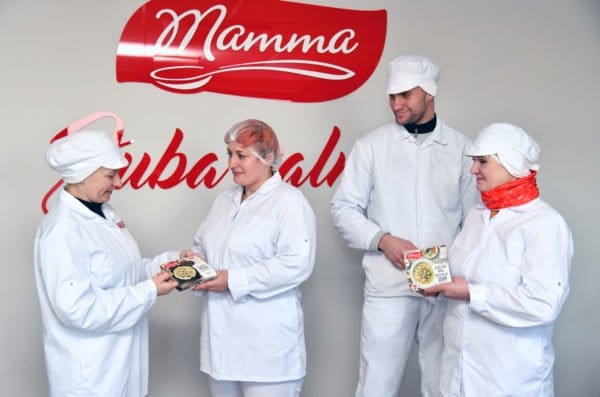
“We require even stricter requirements from ourselves and our partners than these certifications demand”, Marelle elaborates. Each supplier must prove compliance with set quality criteria through their process documentation and regular microbiological tests. Saarioinen also conducts audits at partner sites to ensure that all requirements are met.
Two-layer protection
Maintaining food safety starts with the right materials. Workwear must be durable, breathable, and free from static electricity. In Saarioinen’s highest hygiene zones, employees wear two layers of clothing to prevent contamination. Each garment is designed without buttons, snaps, or zippers to eliminate any risk of foreign objects ending up in food.
“The clothes have a light-colour to make dirt more visible. If they come into contact with food or allergens, they sometimes have to be changed several times a day. Therefore, each employee must have several sets of workwear in their locker,” highlights Marelle.
A laundry process you can trust
Not all washing makes workwear hygienically clean. Lisette Vahar, Key Account Manager and Food Sector Manager at Lindström Estonia elaborates on the specific measures taken to ensure hygienic workwear in food production:
Food industry workwear requires the highest level of cleanliness. The clothes must be washed at a high enough temperature with effective detergents. While advertisements are all about making people happy with the floral scent of their clothes and linen, there is absolutely no scent when it comes to workwear cleaning. There is no floral scent in our laundry facilities, nor are there any chemical residues on the clothes.
Lisette Vahar
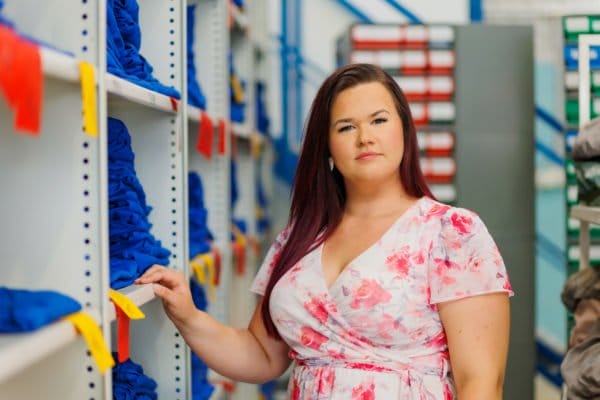
Workwear according to safety standards
Lindström’s service process goes further than cleanliness. Staying ahead of evolving safety standards, we can ensure that our services align with customers’ current and future needs. Vahar explains that she often asks customers about their long-term business strategy and development plans. “For example, if I know that a company may be aiming for the BRC certification, which is considered the strictest in the field, I can immediately recommend the appropriate workwear collection and maintenance solution.”
“We’ve heard from clients that food safety auditors already know that if Lindström is responsible for the workwear service, there will be no surprises. Of course, this feedback makes us happy but not complacent. We always strive to minimise all risks and avoid mistakes caused by human error,” explains Lisette Vahar.
Textiles replacing disposable products
The workwear service is a smoothly running continuous service. Lindström always looks for ways to offer even more value to the food industry. Properly maintained and durable textiles can already today—and even more so in the future—replace many disposable products. This reduces the environmental impact of the food industry.
Reducing the environmental footprint is also an important issue that food industries are increasingly addressing, says Marelle. They are looking for ways to make packaging more environmentally friendly, use less water and electricity, and emit less CO2 into the atmosphere.
Although many industries do not yet see workwear affecting their environmental footprint, textile production is actually one of the most waste-intensive sectors in the world. We were delighted to learn that the clothes that are no longer usable do not end up in incinerators or landfills but are recycled. Saarioinen has nearly 3,000 garments, which is almost 2.5 tonnes of workwear. We want to ensure that these do not burden our planet in any way.
Marelle Pihlak, HR Manager at Saarioinen Estonia
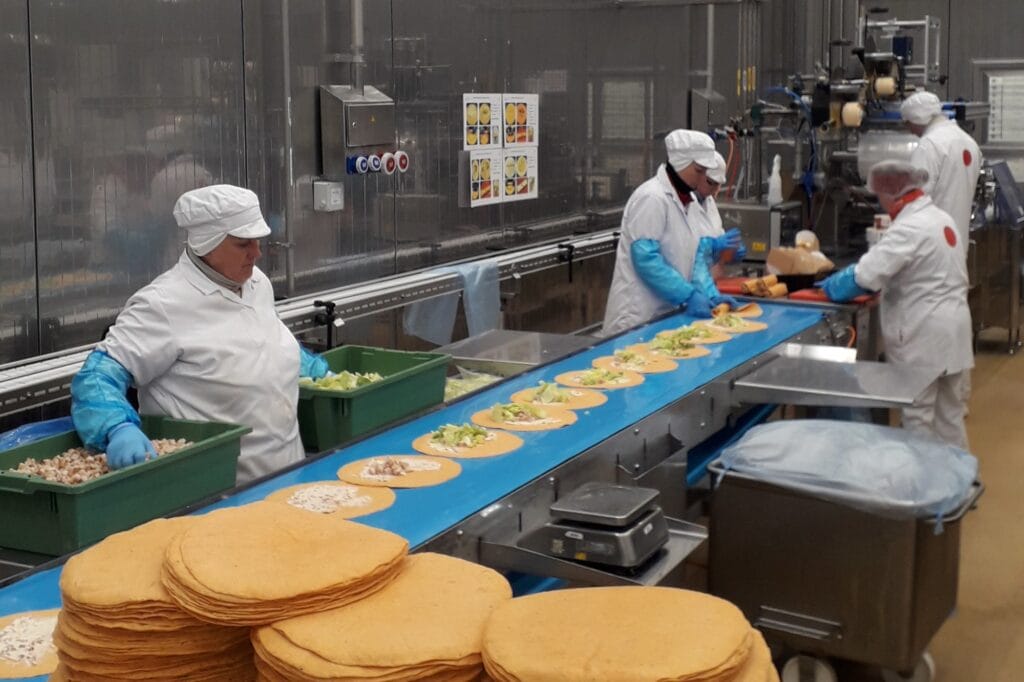
Renting workwear keeps the focus on food production at Saarioinen
According to Marelle Pihlak, textile rental is the best workwear solution for Saarioinen.
We don’t want to deal with laundry because our focus is on preparing quality food made with clean ingredients and heart. Lindström’s focus is on providing workwear rental and cleaning services, and they do it well. Lindström’s full service ensures that our employees always have clean clothes in their personal lockers. We are also very satisfied that all the workwear is digitised, and we can check in the eLindström environment at any time to ensure it is properly maintained. This gives us confidence that a key part of food safety is ensured through partnership.
Marelle Pihlak, HR Manager at Saarioinen Estonia
